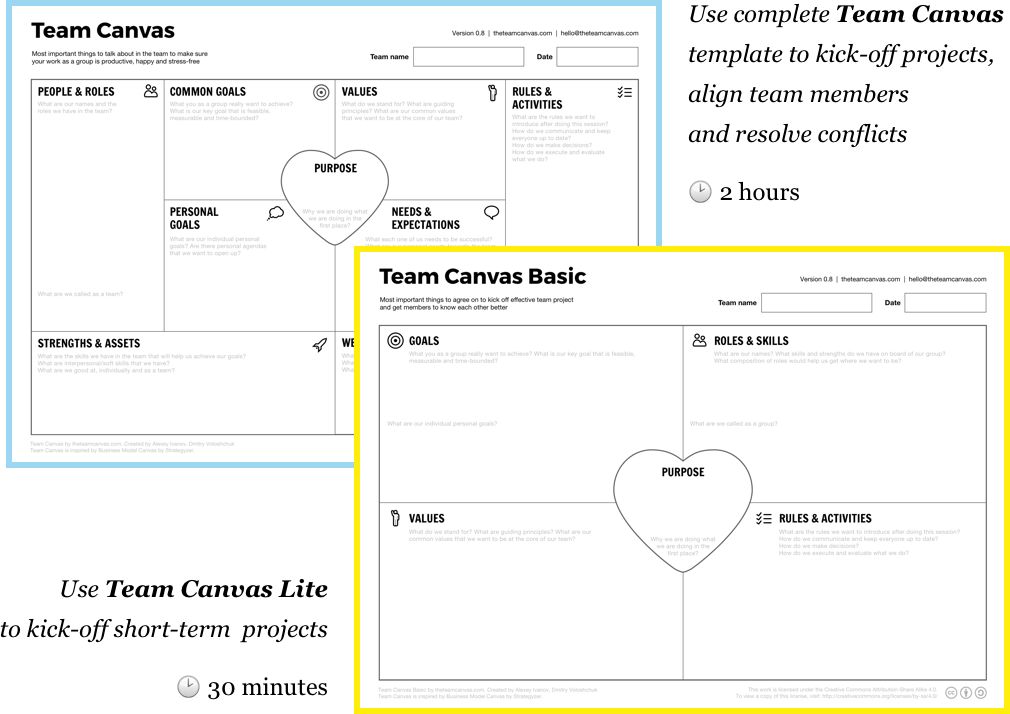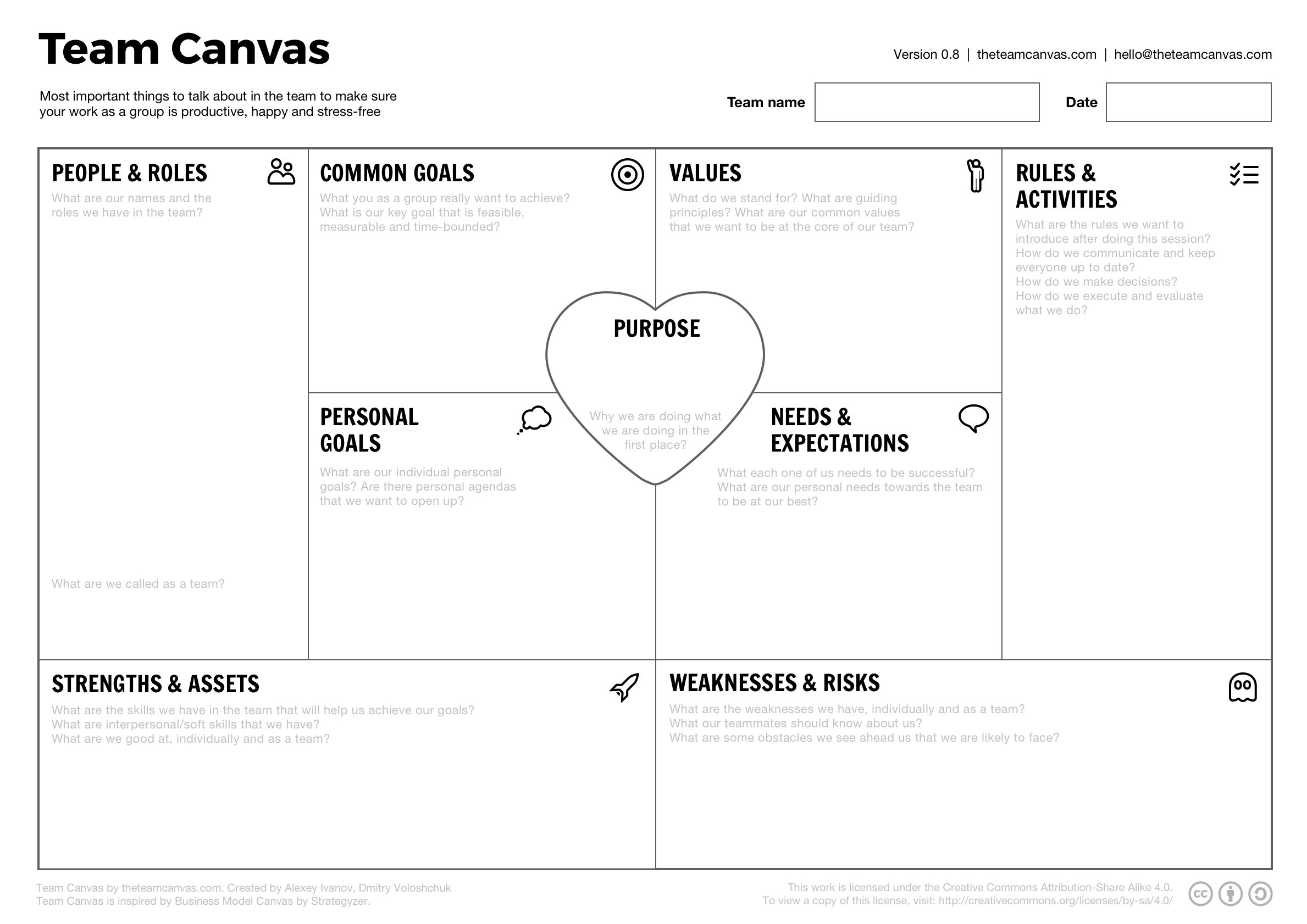Team Canvas
Achieve better team alignment, collaboration, and productivity.
Moises Romero
What Is Team Canvas?
Team Canvas is a collaborative framework that visually outlines roles, goals, rules, and communication strategies within a team. It improves alignment, communication, and productivity by providing a structured format for team members to work together effectively.
Attribution: Inspired by Alex Osterwalder's Business Model Canvas, the Team canvas was originally created by Alex Ivanov and Mitya Voloshchuk.
Why Do Team Canvas?
Using Team Canvas offers several benefits for teams:
- Alignment: Team members gain a shared understanding of roles, goals, and processes, reducing misunderstandings and keeping everyone on the same page.
- Clear Communication: Clearly defined communication strategies prevent information gaps and enhance effective information exchange.
- Collaboration: Collaborative canvas creation fosters engagement, ownership, and diverse perspectives, promoting better teamwork.
- Efficiency: Defined roles and processes streamline task execution, boosting overall team efficiency and productivity.
- Conflict Resolution: Established rules and guidelines minimize conflicts by providing structured approaches to addressing issues.
- Adaptability: The canvas can be adjusted as the project evolves, ensuring the team remains adaptable and responsive to changes.
- Accountability: Team members' involvement in creating the canvas increases accountability for project success.
- Visual Representation: The canvas provides a visual snapshot of team dynamics, helping identify strengths, weaknesses, and opportunities.
Using Team Canvas ultimately leads to improved collaboration, better decision-making, and successful project outcomes.
How to do Team Canvas?
-
Step 1: Access the Team Canvas Template
- Get a copy of the Team Canvas template, or create one yourself.
- Create a new canvas or select an existing template to work with.
Step 2: Familiarize Yourself with Sections
- The complete Team Canvas typically includes sections like "People," "Goals," "Roles," "Rules," "Events," and "Communication."
- Familiarize yourself with each section's purpose before proceeding.
Step 3: Populate the Sections:
People:
- In the "People" section, list all team members' names.
- Specify their roles, responsibilities, and areas of expertise.
Goals:
- Move to the "Goals" section.
- Outline the specific objectives the team aims to achieve.
- Make goals measurable and time-bound for clarity.
Roles:
- Navigate to the "Roles" section.
- Assign team members to specific roles based on their strengths.
- Clarify the responsibilities and tasks associated with each role.
Rules:
- Go to the "Rules" section.
- Define guidelines for decision-making, conflict resolution, and overall team behavior.
- Establish communication norms and preferred tools.
Events:
- Proceed to the "Events" section.
- Schedule essential milestones, meetings, and deadlines.
- Specify dates, times, and descriptions for each event.
Communication:
- Reach the "Communication" section.
- Detail communication strategies, channels, and expected frequency.
- Ensure everyone knows how to effectively exchange information.
Step 4: Collaborate and Input:
- Invite team members to collaborate on the canvas.
- Encourage open discussions and input in each section.
- Allow everyone to contribute their ideas and perspectives.
Step 5: Review and Adjust:
- Review the filled-out canvas as a team.
- Make any necessary adjustments to ensure accuracy and alignment.
Step 6: Save and Share:
- Save the completed Team Canvas.
- Share the canvas with team members to keep everyone informed.
Step 7: Regular Updates:
- Periodically revisit the canvas to ensure it reflects the team's current status.
- Update roles, goals, and other sections as needed.
By following these steps, you can effectively populate a complete Team Canvas template with your team, fostering collaboration, alignment, and successful project execution.
Look at Team Canvas
Links we love
Check out these great links which can help you dive a little deeper into running the Team Canvas practice with your team, customers or stakeholders.

